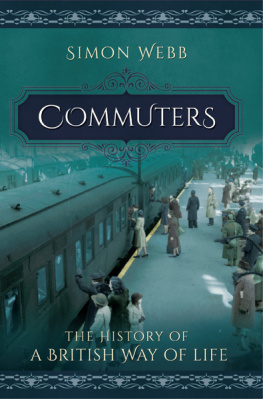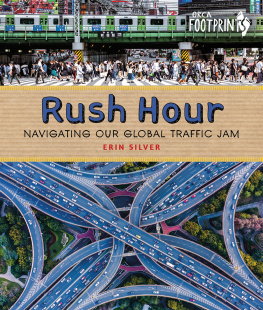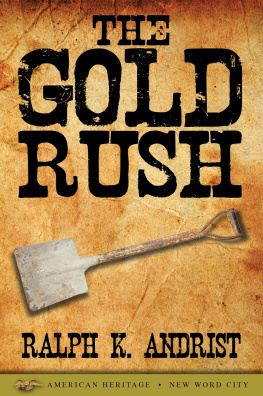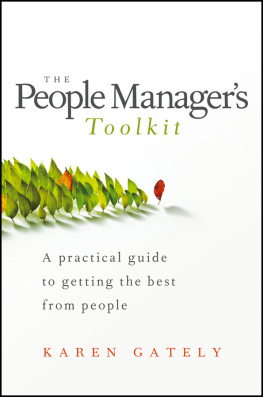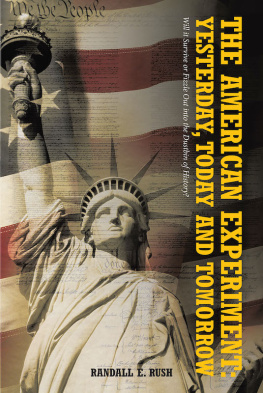Gately - Rush hour : how 500 million commuters survive the daily journey to work
Here you can read online Gately - Rush hour : how 500 million commuters survive the daily journey to work full text of the book (entire story) in english for free. Download pdf and epub, get meaning, cover and reviews about this ebook. year: 2014, publisher: Profile Books, genre: Detective and thriller. Description of the work, (preface) as well as reviews are available. Best literature library LitArk.com created for fans of good reading and offers a wide selection of genres:
Romance novel
Science fiction
Adventure
Detective
Science
History
Home and family
Prose
Art
Politics
Computer
Non-fiction
Religion
Business
Children
Humor
Choose a favorite category and find really read worthwhile books. Enjoy immersion in the world of imagination, feel the emotions of the characters or learn something new for yourself, make an fascinating discovery.
- Book:Rush hour : how 500 million commuters survive the daily journey to work
- Author:
- Publisher:Profile Books
- Genre:
- Year:2014
- Rating:4 / 5
- Favourites:Add to favourites
- Your mark:
- 80
- 1
- 2
- 3
- 4
- 5
Rush hour : how 500 million commuters survive the daily journey to work: summary, description and annotation
We offer to read an annotation, description, summary or preface (depends on what the author of the book "Rush hour : how 500 million commuters survive the daily journey to work" wrote himself). If you haven't found the necessary information about the book — write in the comments, we will try to find it.
Gately: author's other books
Who wrote Rush hour : how 500 million commuters survive the daily journey to work? Find out the surname, the name of the author of the book and a list of all author's works by series.
Rush hour : how 500 million commuters survive the daily journey to work — read online for free the complete book (whole text) full work
Below is the text of the book, divided by pages. System saving the place of the last page read, allows you to conveniently read the book "Rush hour : how 500 million commuters survive the daily journey to work" online for free, without having to search again every time where you left off. Put a bookmark, and you can go to the page where you finished reading at any time.
Font size:
Interval:
Bookmark:


www.headofzeus.com
6.55 a.m., Monday, 13 January 2014. Im standing on platform one at Botley railway station in rural Hampshire, waiting for the 07.01 train to London Waterloo, about to take a ride on a commuter service for sentimental reasons. Three years ago to the day, Id waited on the same spot for the same train, en route to a new job that required me to wear a suit and work from nine to five in an office in London, seventy miles distant in a straight line from my home, but two and a half hours away via a combination of car, train and tube. Id been nomadic for much of the prior decade, and saw the return to commuting as a challenge rather than as submission to a gruelling regime. When the alarm went off at 5.55 a.m., I leapt out of bed with fire in my veins.
Back in 2011, my journey to work would begin at an ironing board, squeezing wrinkles from a shirt. I found it a curiously anodyne activity at first, although compelling too I hadnt ironed in years and felt that once I had begun I should do my best to lay down faultless creases. It was also an opportunity for contemplation, not least of the mystery of why shirts should be My conclusion a week into my new commute was that we iron to make ourselves look young again. We try to convey the same messages with our clothing as we could with our flesh before we had wrinkles. That it also makes us appear neat and businesslike is incidental.
With shirt ironed, face shaven, shoes shined, and swaddled in a suit and overcoat, I was ready to go. At 6.20 a.m. Id start the car, turn on the blowers and wipers, and dash back and forth from the house with pans of tepid water to clear the ice off its windows. At 6.24 a.m., Id plug in my seat belt and head off into the lanes. There was still snow from Decembers blizzards in the fields and banked up under the hedgerows, and snowmen built over Christmas lived on in front gardens. As soon as I passed fifty miles per hour my windscreen re-froze and was coated inside and out with a lattice of ice crystals that shattered and refracted oncoming headlights into a million little rainbows. Id scrub a hole the size of a diving mask in front of my eyes through which I could see trees and hedges, hung with needles of ice, glittering along the verges. If the night had been cloudless, the road too might shimmer at its fringes, and then I knew there was black ice about, which made me drive as if on tiptoes. It caught me out a week into my new job, but I got control back just before the car buried its nose in a hedge. The adrenaline rush was tremendous. There wasnt time to think. It was only afterwards that I remembered youre meant to steer with the slide not against it if you lose control and wondered if thats what Id done.
The next challenge on my daily odyssey was whether I should waste a minute or two to see if there was a parking space free at Botley station. It wasnt a problem if not: the Railway Tavern over the road had plenty at 4 per day, but since there was a chance of paying nothing and being on the right side of the road for the drive home Id try the station first. A frisson of paranoia always touched me as I turned in. Botley has room for only twenty cars and that's if people park considerately. Theres an aggregates plant at the end of the car park, and lorries waiting to weigh in often blocked the last free space. The plant usually cleared them quickly so it was worth hanging on, although only until 6.51 a.m. at the latest, when one had to bolt for a slot at the pub in order to leave enough time to make the train.
Botley station per se, a handsome four-square Victorian building, with loos, a waiting room and a wooden canopy on cast-iron pillars over platform one, was demolished in 1963. Now the dot on the map consists of a ticket machine, a fibreglass shed, and a chain-link fence between the car park and the platforms. A plastic information board beside the machine, co-sponsored by South West Rail and Hampshire County Council, announces various non-existent facilities including a waiting room and wheelchair access. On the other side of the car park, a drinking fountain commemorates Queen Victorias Diamond Jubilee, and an adjacent stone marks the spot where John Diggins of the Talbot Fencibles was gibbeted for the murder of Thomas Webb, a travelling man, whom he robbed then stabbed with his bayonet and left in a ditch to bleed to death on 11 February 1800.
There were usually about a dozen or so other people waiting with me for the 07.01, clustered in pools of orange light along the platform, puffing out clouds of condensation with each breath. Everyone was wrapped up tight and some paced to and fro, halting now and then to stare at the LED display mounted on a steel pole that streamed details of the next three trains that were due to arrive. Loudspeakers under the display sometimes announced contradictory information: perhaps pressure sensors on the tracks prompted a computer to play a pre-recorded message. The announcers voice was female, calm and conciliatory: Big Sister on the Tannoy. She was often guilty of double-speak: The train about to arrive on platform one is the 07.01 service to London Waterloo via Basingstoke, stopping at Eastleigh, Winchester, Micheldever This train has five coaches she would tell us, although the display indicated that the 07.01 was now expected at 07.26, and then she would warn us to stand well clear of the platform edge as the train approaches, while the station was still wrapped in silence and gloom.
The rails started to hum when a train was really imminent. The next indication of its approach was its headlight, visible from a quarter of a mile or so out. On frosty mornings a vortex of white specks like dandruff hovered around its beam as it whirled up ice crystals from the tracks. It seemed to pull up impossibly quickly. From where I stood in the middle of the platform the first two carriages appeared to flash by, the third crawled, and the fourth halted at my feet and juddered. Then the lights around the door buttons flashed, a signal pinged, and it was time to enter the capsule. On my first day back on the rails, I had to kill a childhood superstition before climbing aboard. Id grown up in Hong Kong and the 07.01 had the number 4444 stencilled on its carriages, which corresponds to Death Death Death Death in Chinese numerology. Only more 4s could have made it unluckier.
Although we commuters at Botley were few, the seconds we spent getting into the train were fraught. There were rituals and pitfalls that took time to learn or to avoid. People formed informal queues for the carriages, and in order to be at one of their heads it was crucial to stand at exactly the right spot on the platform, which varied by a yard either way each day. If one too many got on before you, the journey ahead might be less tolerable.
As soon as we were through the trains doors wed dash left and right down the aisles in search of a seat, as if we were playing at musical chairs and the music had just stopped. The interiors of the Standard Class carriages of the 07.01 made it feel all the more like a game. They had the same bright colours and rounded edges as the diversions in a childrens playground or a primate enclosure at a zoo. The levity that these conveyed was spoiled by the rash of warning notices on their walls, doors and windows: Dont Smoke; What to Do in Case of an Emergency; Quiet Zone. Perhaps two-thirds of the seats had stickers on their backs that designated them as priority, implying that a statistically unlikely number of us were pregnant or disabled.
Next pageFont size:
Interval:
Bookmark:
Similar books «Rush hour : how 500 million commuters survive the daily journey to work»
Look at similar books to Rush hour : how 500 million commuters survive the daily journey to work. We have selected literature similar in name and meaning in the hope of providing readers with more options to find new, interesting, not yet read works.
Discussion, reviews of the book Rush hour : how 500 million commuters survive the daily journey to work and just readers' own opinions. Leave your comments, write what you think about the work, its meaning or the main characters. Specify what exactly you liked and what you didn't like, and why you think so.




